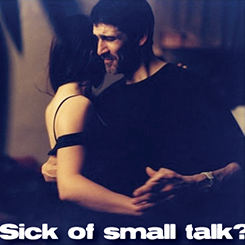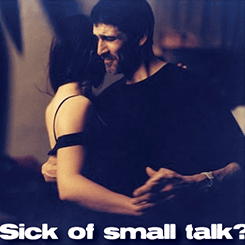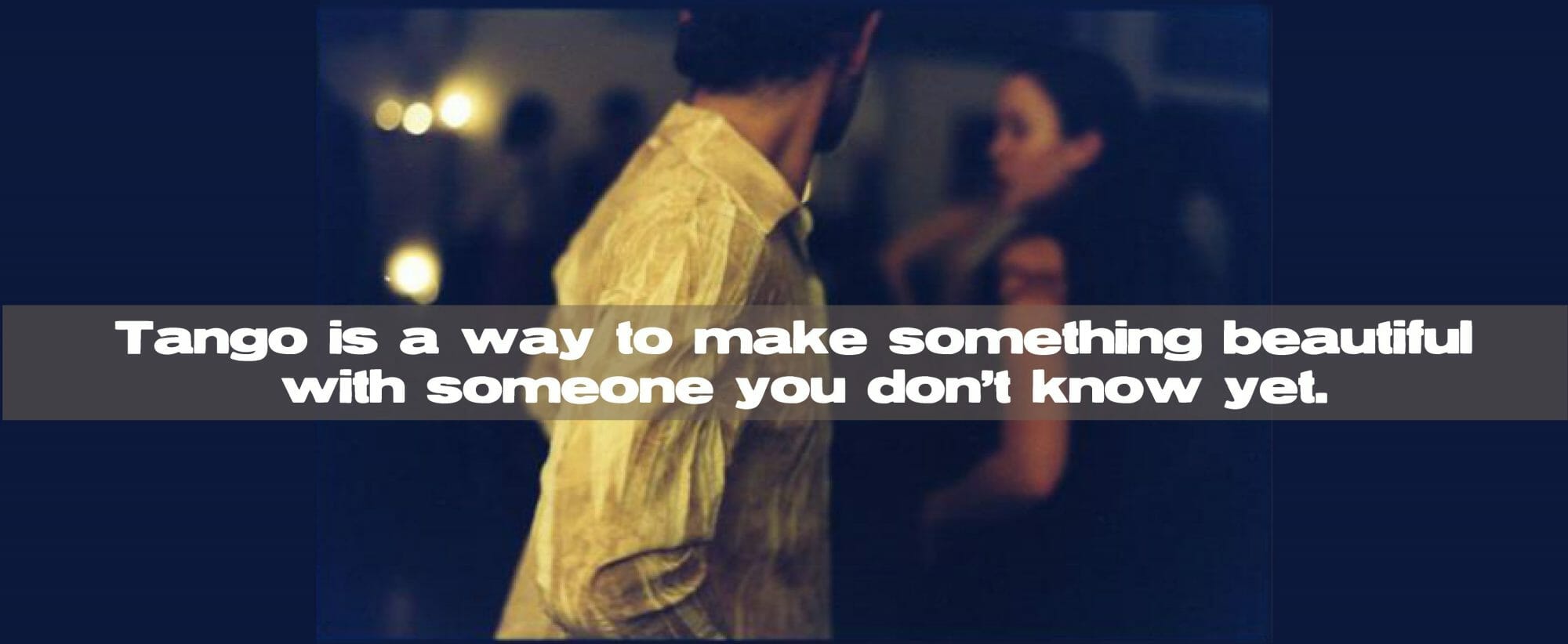I, You, and ‘the Embrace’: Tango as Relationship Therapy
By Amelia Rachel Hokule’a Borofsky
The Atlantic, Oct 23 2012
Taking a test on healthcare provider burnout, I met every criterion. It lists the familiar recommendations that no one has time for: “self-care,” “exercise,” “sleep,” “eat.” The same ones I make to my patients.
At home, between my partner and me, we also needed a radical intervention.
In most long-term couples, the physical union is the first to go. Helen Fisher, the neurobiology love guru, has shown that caressing and holding hands increases levels of oxytocin, the horomone of attachment. She’s written on how proximity and orgasm increase serotonin as well. She’s a proponent of “faking it until you make it.” The mind will eventually catch up with the body. So we decided to dance.
We found out a friend’s apartment was going to be empty for a few months in San Telmo, Buenos Aires, and we headed to Buenos Aires for café con leche and tango.
***
Buenos Aires is the capital of psychoanalysis. The joke goes, “There are two psychoanalysts for every Argentine.” In Buenos Aires, psychoanalysis costs as much as two cups of coffee, taxi drivers want to discuss their dreams, and every corner has a Lacanian institute. But my partner and I did not come for the psychology. At least, not the way it’s usually practiced.
We arrive in San Telmo on a Sunday. We walk down the cobblestone streets to Parque Lezama, where couples of all ages dance tango to a live band under a string of yellow Christmas lights. As I step on a pile of dog shit, I close my eyes and imagine I am on the Left Bank of Paris in the 1920s. Nostalgia drips from the music as the lyrics lament, “Her laughter, her fire-like breath next to my lips…” Couples therapy has already begun.
I am ready to take burn out onto the dance floor, but my partner protests. “We have no idea how to tango,” she says. “It doesn’t matter,” I say as I drag her into the milonga — the circle of dancers moving steadily clockwise. This interaction highlights a deep truth in our relationship — my bossy impulsivity tempered by her practicality. We agree to take a lesson first thing tomorrow morning.
“Don’t suffocate me,” I say. “I’m not,” she insists.
Through a friend, we find Helen La Vikinga (“The Viking”), so named for her Icelandic blue eyes, high cheekbones, whispy blond hair and stocky frame. We find the doorbell on a paint-peeling door and walk up a stairway with every third stair missing. In contrast to the exterior, the interior boasts high ceilings with chandeliers, wood-panel floors, French doors and a wrought-iron balcony. Helen came to tango, as many do, after loss. “I grew up in Iceland and married my high-school sweetheart,” she tells us. “My husband, a fisherman, died at sea, leaving me to raise our two young girls. Only in my twenties, I moved to Sweden where I poured my sadness into tango. Once the girls grew up, I packed my bags and moved to Buenos Aires to open a tango hostel.”
As a therapist I have to ask, “Does the dance become a place to pour sadness?”
“Absolutely,” she replies, “I have had women cry when touched and later they tell me no one has touched them in years. I have witnessed couples divorce and students fall in love. Everything happens in tango.” Our lesson begins.
Onto the floor we glide. “Find the embrace,” she calls out to us. “Its all about the embrace.”
A few among us press their clammy cheeks together while the ones who just met barely touch. My partner and I try a variety of embraces: cheeks touching, cheeks not-touching, chests touching, chests not touching, shoulders touching, shoulders not-touching. Another truth about our relationship — we like to experiment. And another — I have a hard time settling into one embrace.
“Don’t suffocate me,” I say.
“I’m not,” she insists.
Helen specializes in queer tango, allowing partners to challenge traditional gender roles by switching from leader to follower and follower to leader.

My partner asks, “Do you want to lead or should I lead?”
“I don’t care,” I say. “It’s up to you,”
“I don’t care either,” she says. And in that moment something else becomes all too clear about our relationship: neither of us likes to lead.
“I’ll lead,” she finally gives in. This means that I must trust her not to knock me into any walls. I start to walk backwards.
“Wait,” she says, “I haven’t lead you yet.” I stop. I lean in. Our chests touch. I close my eyes. She leads me into the unknown.
“Wait,” she says, “You’re collapsing into me.” Something else becomes clear: I either want to do it all on my own or collapse into her. It is hard to find the balance of standing on my own two feet while being fully integrated into my relationship.
Virginia Satir, the mother of American family therapy, claimed that the goal of marriage therapy was “not to maintain the relationship nor to separate the pair but to help each other to take charge of themselves.” This is precisely at the heart of good couple’s therapy — differentiation.
For a period of time the field talked a lot about good communication but found these skills flew out the window during fights at home. The research of John Gottman and colleagues further showed that fights did not matter as much as how quickly you make up. David Schnarch in Passionate Marriage elaborated on this central task of how to hold onto yourself, while your partner holds onto themselves, and you hold onto each other. My aunt and uncle, Rich and Antra Borofsky, well-known gestalt couples therapists in Boston, call this the dance between “I,” “You” and “We.” In couple’s workshops, they act out the shifting dance between all three people in the room. This is precisely tango: “I,” “You,” and “the embrace.”
Efficacy research shows that couples therapy does not tend to keep couples together, though it can do better than no therapy. Couples usually enter therapy after one partner has already decided (consciously or unconsciously) to leave the relationship. A colleague of mine will not start working with a couple until both parties commit to six months of fully being together. If in six months, no improvement has been made, each is free to leave. “Without this commitment,” he says, “there’s no hope.”
Couples therapy can be demanding for the therapist, requiring a great deal of intervention and skill with mixed results. Research shows that pre-marital counseling works best for keeping couples together, as this is the time of high commitment when they can discuss children, finances, dreams.
I had a couple come in ready for divorce because one wanted children and the other did not. “You never discussed this before getting married?” I asked. They shook their heads. It was a case of an I, a You and no We. I imagined them on the tango dance floor, in a distant embrace, each holding onto themselves but not to one another.

Tango has been called an addiction. Many have left their lives in high-powered jobs behind to move to Buenos Aires and spend the rest of their lives dancing tango. The body leads and the mind wants more. “Its an obsession,” says Helen the Viking.
The International Association of Tango Therapy champions tango as a remedy for everything from depression and trauma to Alzheimer’s and Parkinson’s and has a few studies to back this up. Researchers at the University of Washington found that when patients with Parkinson’s took tango lessons, their balance and gait freezing improved significantly better than from an exercise class alone. Tango’s intricate steps helped improve the memory of a sample of Alzheimer’s patients in Britain. Cynthia Quiroga Murcia, a psychologist at Goethe University in Frankfurt, conducted a study testing 22 men and women’s saliva before and after dancing tango. She and her colleagues found increased testosterone and decreased cortisol (a stress hormone) in men and women.. In filling out mood questionnaires before and after, participants felt calmer, sexier and more closely bonded. Other dances did not have this same effect. Helen the Viking, and our guide to all things tango, says “It’s because of the embrace.”
At the end of our three months, my partner and I return to the open-air milonga in Parque Lezama. The melancholic music of longing plays on a gramophone. A woman in her eighties wearing a blue chiffon dress and her tuxedo-clad companion hold each other. Their feet move in playful improvisation. Trusting the unknown and being fully present allows for this spontaneity, humor, and playfulness to naturally emerge. Tango, like relationships, involves a great deal of improvisation.
In our time here, my partner and I manage to find a way to one other. I step into the unknown and trust her to lead me. We don’t know where we’re going or what we will bump into, but we keep on moving. We switch between leader and follower, each on our own individual axis, gently leaning into an embrace.














